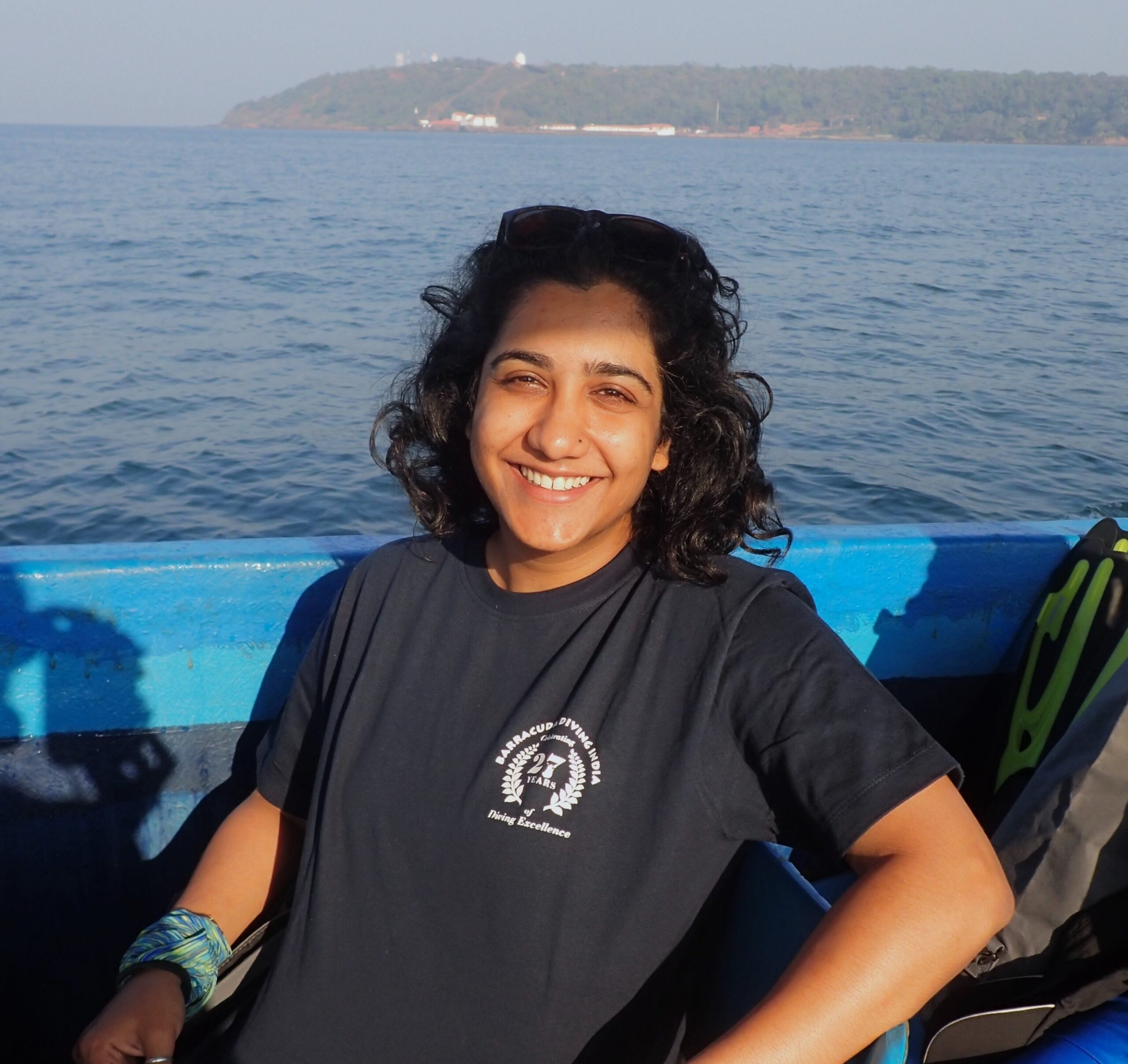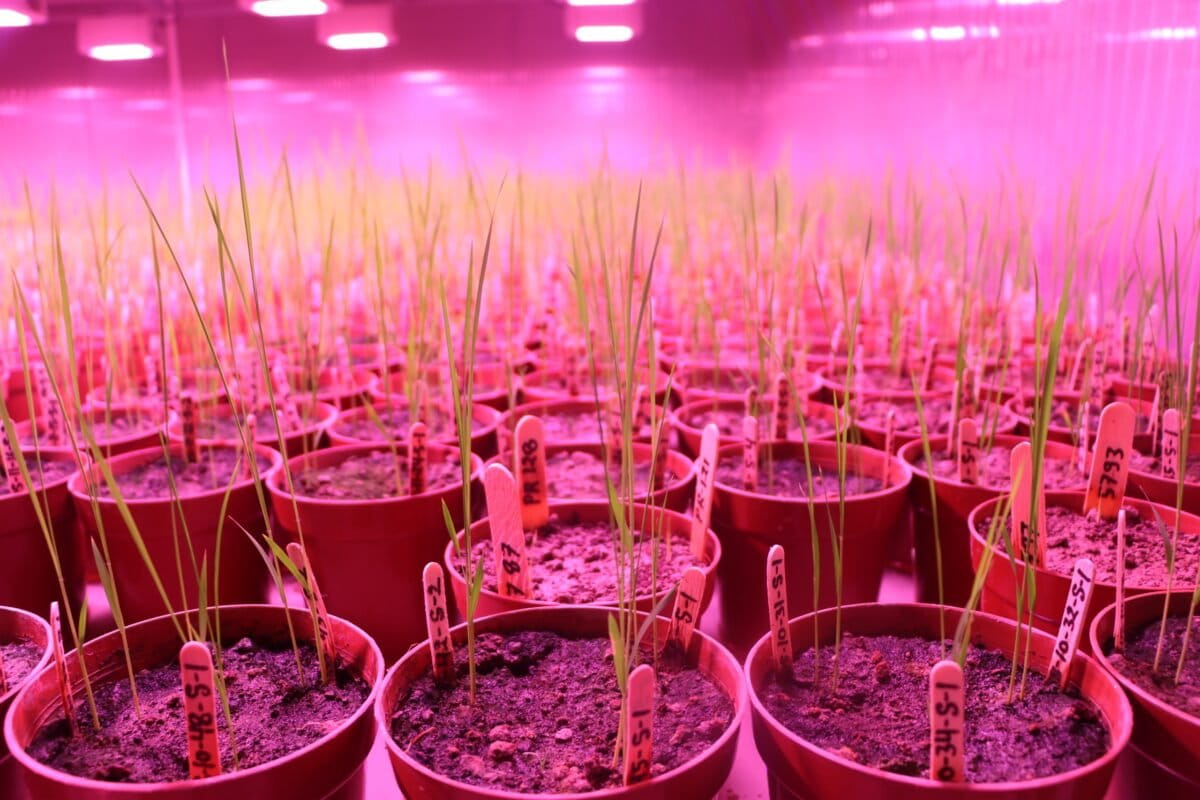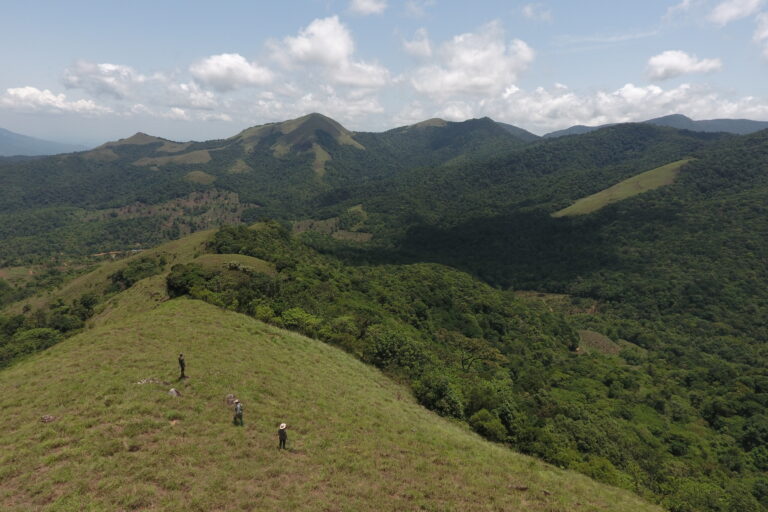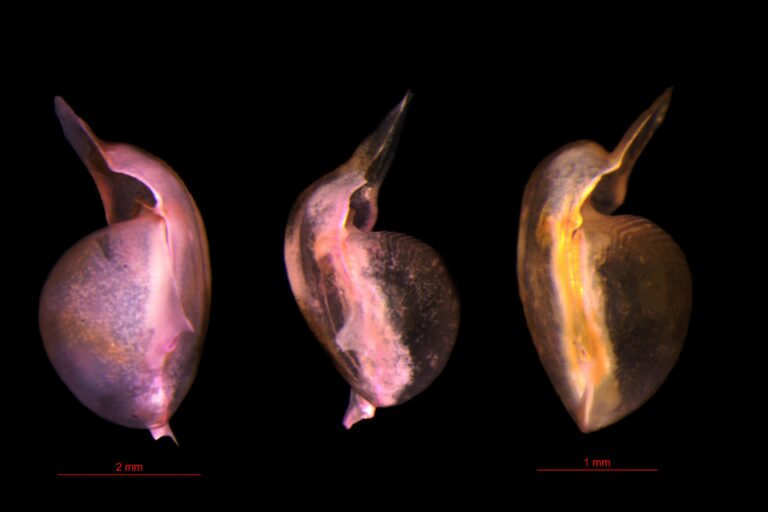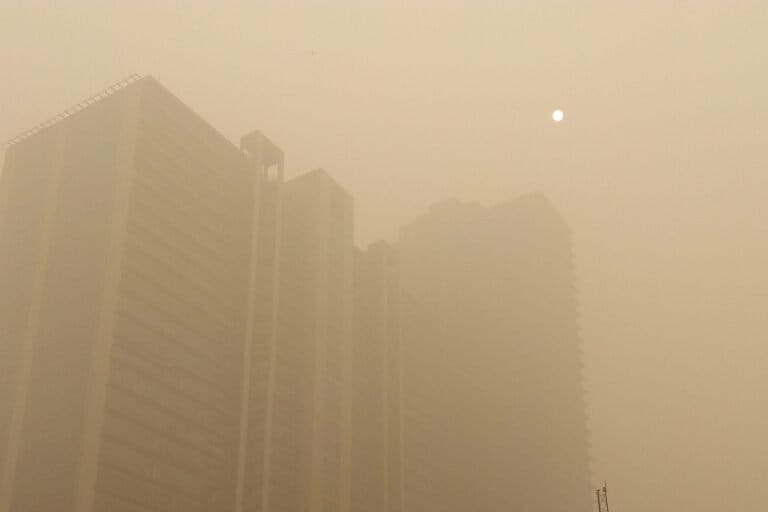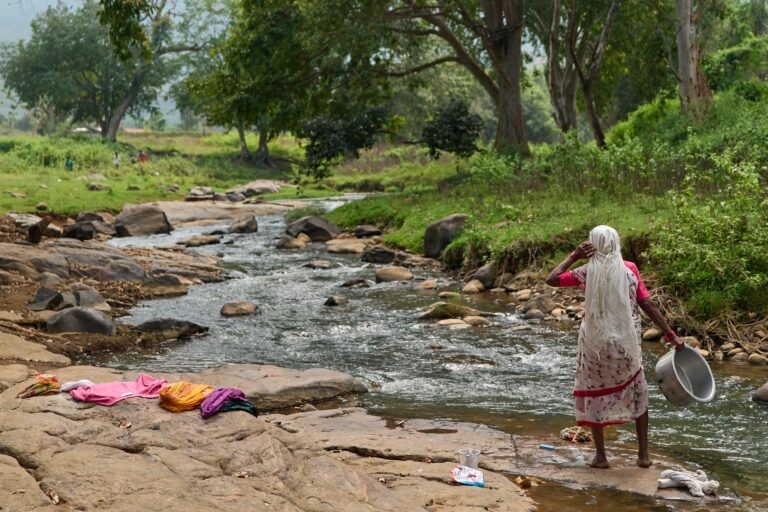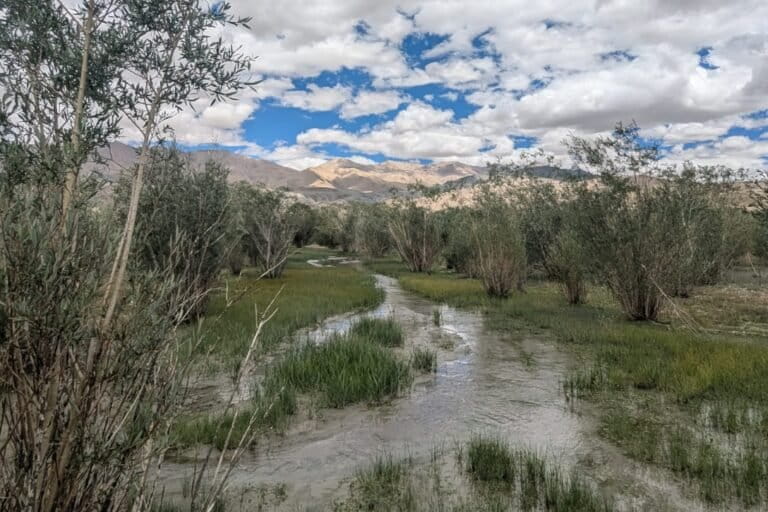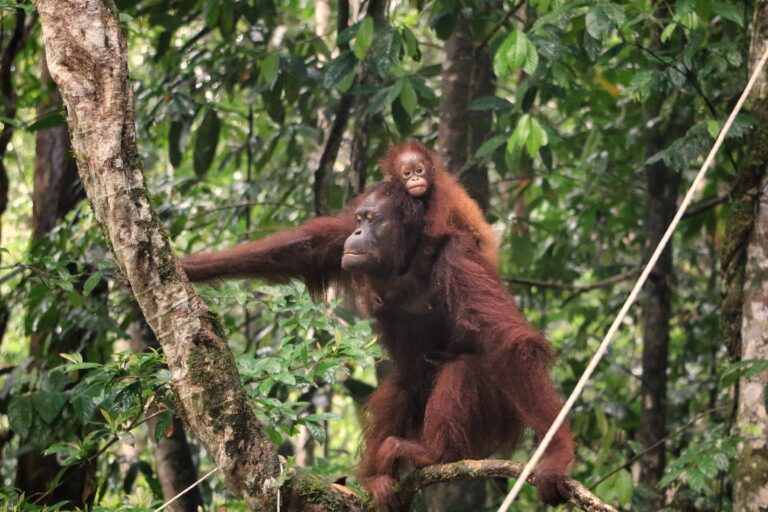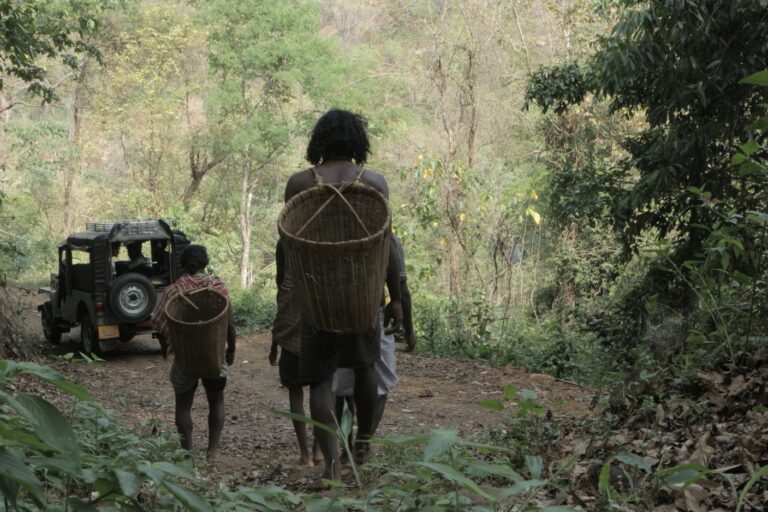- Blue carbon is the carbon captured and stored in marine ecosystems.
- Coastal marine ecosystems are critical in the fight against climate change as they can sequester up to 55 times more carbon per unit area than tropical rainforests.
- Global blue carbon or coastal ecosystem declines release large amounts of carbon back into the atmosphere.
Blue carbon refers to the carbon captured and stored by marine ecosystems. The term “blue carbon” is an extension of the well-known concept of “green carbon,” which refers to the carbon stored by terrestrial ecosystems like forests and grasslands.
Coastal marine ecosystems such as mangroves, salt marshes, and seagrass meadows play a crucial role in sequestering carbon dioxide (CO₂) from the atmosphere and storing it in their biomass (leaves, branches, roots, etc.) and sediments. These ecosystems are remarkably efficient in sequestering carbon, with the oceans playing the role of the largest heat and carbon sinks on the planet.
Through photosynthesis, mangroves, salt marsh vegetation, and seagrasses absorb atmospheric CO₂ and store it as sugars and other organic forms of carbon in their biomass. Tides and drainage basins bring in more organic carbon in the form of decaying matter, which is deposited in the sediment, and the falling leaf litter adds to this. These marine ecosystems can store carbon in the sediments for long periods of time, ranging from a few decades to millennia, setting them apart from other terrestrial ecosystems. This is because the near-constant state of inundation and tidal action in these habitats slows down the decomposition of organic matter, effectively locking the carbon away in the sediments.
Mangroves are among the most efficient carbon sinks in the world, storing around three to five times more carbon per unit area than tropical rainforests. While still relatively underexplored, studies have established that seagrass meadows and salt marshes too, store more carbon than tropical rainforests do.

In India, blue carbon ecosystems are predominantly found along the country’s vast coastline and the islands including the coastal regions of West Bengal, Gujarat, Odisha, Tamil Nadu, Kerala, Karnataka, Goa, Daman and Diu, Maharashtra, Pondicherry, and the Andaman and Nicobar Islands.
How do blue carbon ecosystems help in climate change mitigation?
Marine ecosystems, or blue carbon ecosystems, play important roles in supporting biodiversity and providing livelihoods. They are also critical in the fight against climate change for several reasons.
Oceans are the largest heat and carbon sinks. They absorb more than 90% of global heat emissions, and marine ecosystems store around 83% of global carbon dioxide – a major greenhouse gas responsible for global warming – in the form of carbonates, organic matter, and dissolved forms. Coastal habitats such as seagrasses, salt marshes, and mangroves cover less than 1-2% of the total marine area but are carbon powerhouses, accounting for nearly half of all the carbon stored in the marine sediments.
A study on the carbon sequestration potential of disturbed and undisturbed mangrove ecosystems in Kerala estimated that undisturbed and conserved mangroves could sequester nearly 287 tonnes of carbon per hectare (tC/ha) annually. Salt marshes can capture up to two tonnes of carbon per hectare (tC/ha) annually. For context, a 42-seater bus weighs an average of 9-10 tonnes, and the average weight of an armoured tank is around 65 tonnes.
Incidentally, recent studies looking at the relatively underexplored salt marshes claim that these less-widespread ecosystems can sequester 43-55 times more carbon per unit area as compared to terrestrial forests, potentially rivalling mangroves. However, despite the capture rates being lower than salt marshes, the significantly larger area covered by mangroves stores more carbon overall.

Coastal ecosystems also act as a protective barrier against extreme weather events which are becoming increasingly frequent. They also stabilise the sediment and prevent coastal erosion. Mangroves, for instance, buffer the coastline and coastal communities from tsunamis, storm surges, and cyclones. A recent example is how the force of Cyclone Dana, which struck the Odisha coast in October 2024, was significantly impeded by the Bhitarkanika mangroves, thus, reducing the damage on ground.
Recent studies show that seagrass meadows are capable of combatting ocean acidification in coastal waters. A six-year study led by the University of California, Davis found that seagrasses were able to improve the pH levels of coastal waters, cutting down the acidity by around 30%. The normal pH of the ocean is slightly alkaline, at around 8.1 to 8.2 on the pH scale. However, due to rapid and large-scale absorption of CO2 (due to the vast amounts of the greenhouse gas present in the atmosphere), oceans are turning more acidic, with the pH falling from 8.11 in 1985 to 8.05 in 2022 – posing serious concerns for sensitive marine life, especially corals.

It is important to restore and conserve blue carbon ecosystems as a potentially highly effective, nature-based solution to climate change.
In India, the restoration and preservation of coastal ecosystems can play a vital role in enhancing the country’s climate resilience. The Sundarbans, for example, are not only home to rich biodiversity, but also serve as an important carbon sink, as well as a coastal barrier. Protecting these ecosystems is also crucial for mitigating the effects of sea-level rise, which is a particular concern for low-lying coastal areas.
What are the threats to blue carbon ecosystems?
Despite their importance in mitigating climate change, and an increasing awareness and urgency to conserve them, blue carbon ecosystems are under threat from human activities and climate change itself. The key threats to coastal ecosystems and thus, blue carbon reserves, includes coastal development, deforestation, pollution, habitat degradation, destructive fishing practices, unmanaged tourism, and climate change.
Mangroves, seagrasses, and salt marshes are being lost at a rate of 1.5-2% every year, with 30-70% of the global historical coverage having been lost already – up to 67% (mangroves) and at least 35% and 29% for salt marshes and seagrasses respectively. The destruction of these ecosystems releases the stored carbon back into the atmosphere in gaseous form, increasing global emissions, exacerbating climate change, and further reducing the capacity of these ecosystems to sequester carbon.
How do we protect blue carbon ecosystems?
Addressing the threats to blue carbon ecosystems requires a multi-pronged approach involving protection, restoration, sustainable management plans, and international cooperation.
In India, several key mangroves such as the Aghanashini Estuary (Karnataka), Sunderbans (West Bengal), Bhitarkanika (Odisha), and Pichavaram (Tamil Nadu) have already been declared as Ramsar Sites or wetlands of international improtance.
The government of India has also initiated restoration programs for mangroves in several states. The Mangrove Initiative for Shoreline Habitats & Tangible Incomes (MISHTI) is a five-year participatory project launched in 2023 by the Ministry of Environment, Forest & Climate Change (MoEFCC) to restore 540 sq. km. of mangroves across nine states and three union territories. There are also private initiatives to restore mangroves in the country.

The Blue Carbon Initiative, a global collective that works to mitigate climate change by protecting and restoring coastal ecosystems, has been implementing collaborative activities in several regions of the world through thematic working groups.
The Intergovernmental Panel on Climate Change (IPCC) and International Union for Conservation of Nature (IUCN) also highlight the urgent need to conserve these coastal ecosystems. Mapping, conserving, and monitoring existing coastal ecosystems is crucial to fill in data gaps. Concurrent implementation of efforts backed by robust research to restore the degraded ecosystems and driving policy action are equally important approaches as the world edged closer towards the 1.5 degree Celsius threshold.
Read more: [Explainer] What is teal carbon?
Banner image: Lagoons with seagrass in Kalpeni, Lakshadweep, in 2011. Image by Vaikoovery via Wikimedia Commons (CC BY 3.0).


